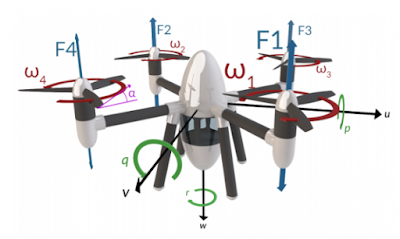 |
| Robotic Quadcopters |
The vomit comet, an aircraft that follows a parabolic trajectory to mimic zero-g conditions, is one of the amusingly named achievements of aeronautical engineering. These aircraft are used by both persons who desire to experience zero gravity and astronauts to practice weightlessness for durations of around 25 seconds. The weightless scenes in the film Apollo 13 were entirely captured on camera inside a vomit comet at zero gravity, therefore the planes have been used by others as well.
One of the alternatives open to scientists to conduct research in microgravity is the use of vomit comets. However, vomit comets are expensive, costing up to $3,000 per kilogram, and they must be reserved months or years in advance, making it difficult to repeat an experiment that has somehow gone awry.
A drop tower is an additional choice. These may be scheduled easily and have a short turnaround. However, they are already unreasonably pricey.
And the most expensive option for practically everyone is a flight on the International Space Station or a custom spacecraft.
Therefore, before moving forward with more expensive possibilities, scientists would dearly love to have a quicker and less expensive alternative, if only to test proof-of-principle designs.
Thanks to the efforts of Juan-Pablo Afman and colleagues at the Georgia Institute of Technology in Atlanta, they now had their wish—or something close to it—come true. These guys had the brilliant concept of utilizing a self-flying quadcopter to temporarily eliminate gravity. Their solution is extremely adaptable, simple to replicate, and most importantly inexpensive.
The forces that a zero-g quadcopter with variable pitch rotors might produce are depicted in this diagram.
Their objectives are simple to state. They want to comply with regulations, have at least five seconds of free fall, and accomplish all of this with a system that won't cost them more than $25,000.
That's not as simple as it seems. Afman and his colleagues discovered right away that even after turning off a quadcopter's motors at a great height, the drop does not produce zero-g because of air resistance.
Even worse, when the motors are turned back on, the significant instabilities caused by the forces acting on the rotors make it difficult for the vehicle to recover. The vehicle is unable to maintain an appropriate attitude during the maneuver because the thrust forces are almost zero, they claim, and the results are catastrophic.
The issue is that most quadcopters have fixed-plane rotors, which cannot provide the forces required to sustain zero-g or to steady the craft during free fall. The crew was forced to develop its own variable pitch rotor design to always have control over the craft in six degrees of freedom.
Regulatory restrictions exist, of course. The biggest is that neither Europe nor the United States allows the use of quadcopters over a height of around 120 meters. Furthermore, the experiments they can carry out are limited by their weight limit of approximately 25 kg.
However, the group is still able to create trajectories that generate zero-g for up to five seconds while maintaining complete control of the vehicle.
The team also specifies a geographic area that the quadcopter must always remain inside for safety's sake. This is determined by the ballistic distance that the car would cover in the event of a power outage. This ensures a certain level of safety and is known as a "geofence."
For certain studies, the team has also developed software that enables users to design trajectories with various zero-g time profiles.
The crew has put in a remarkable amount of preparation work on the ground but has not yet conducted any zero-g flights, primarily because of problems with rotor design. They vow to conduct several zero-g flights at the end of 2016, so we'll just have to wait and see how well the apparatus works.
The work is a potential advance for zero-g research in the interim. The system's cost makes it available to a variety of institutions, including maybe schools. That ought to spark a renewed interest in experiments that can be carried out with little to no vomit.










No comments:
Post a Comment